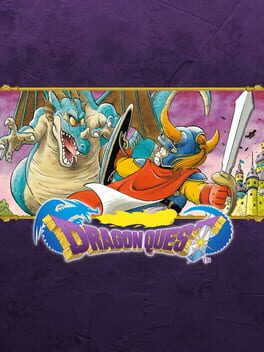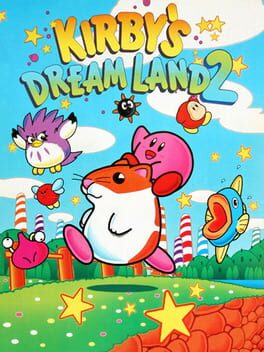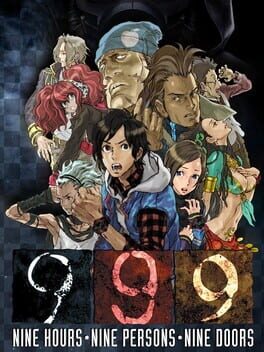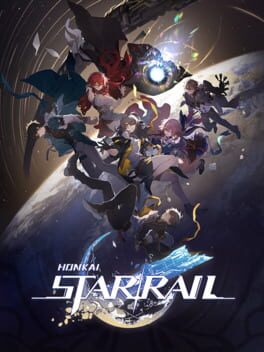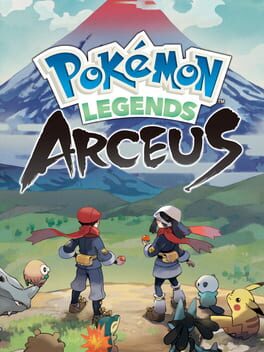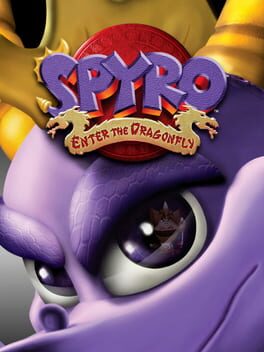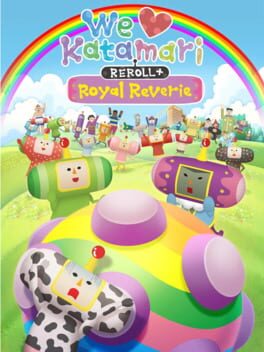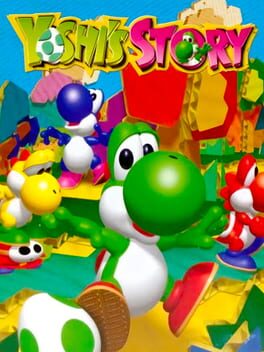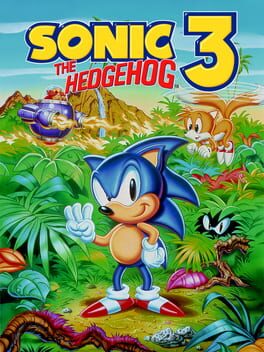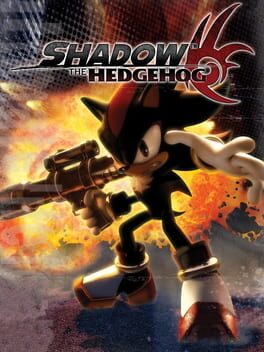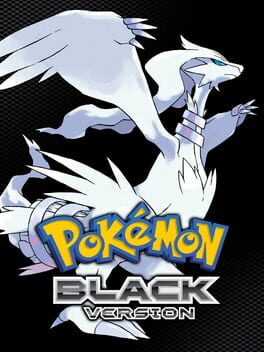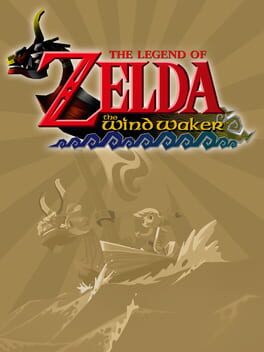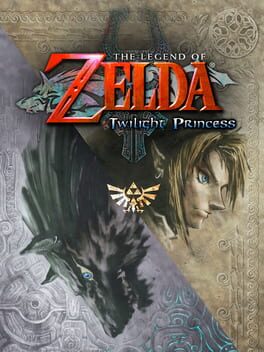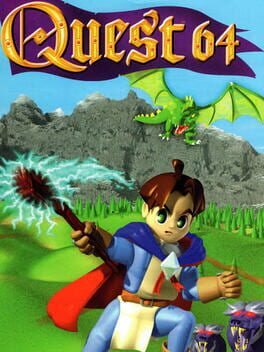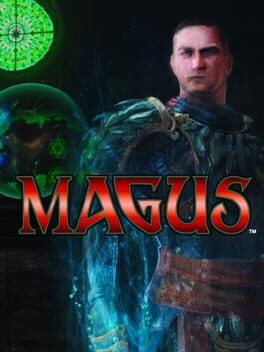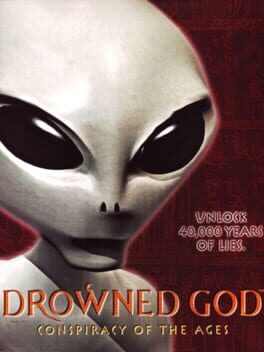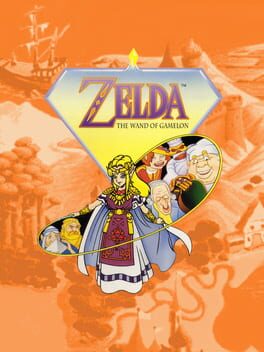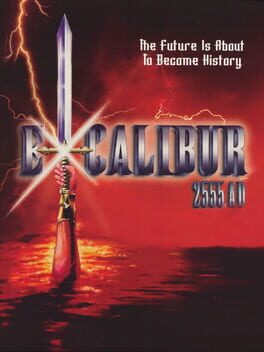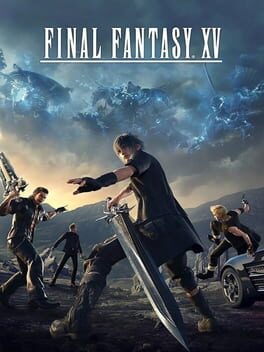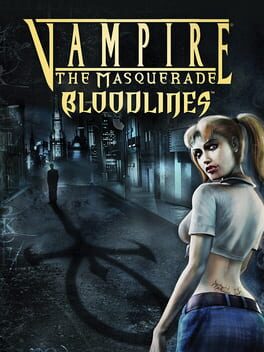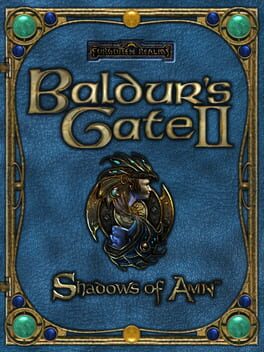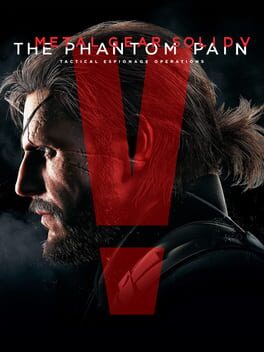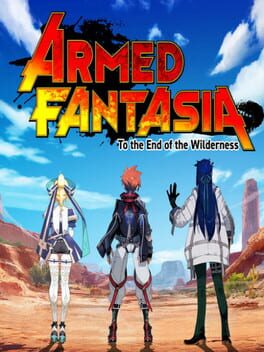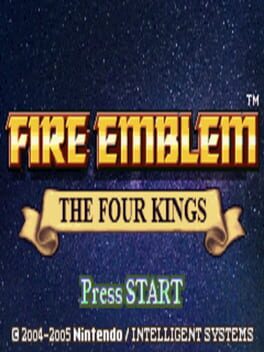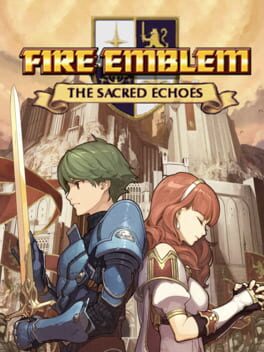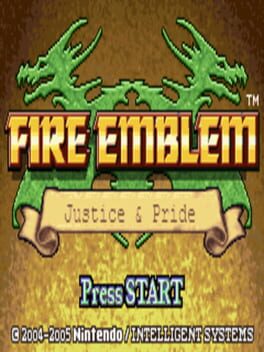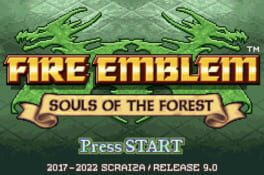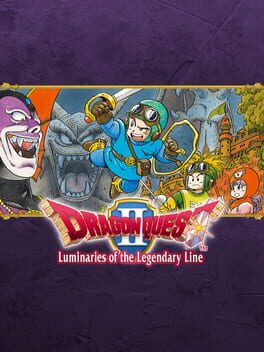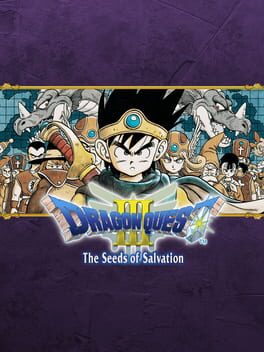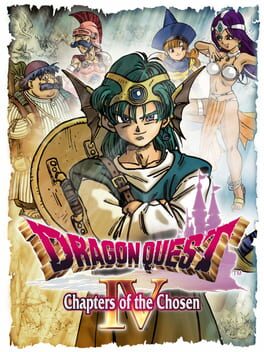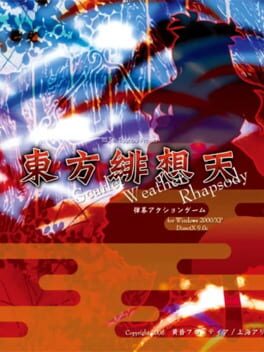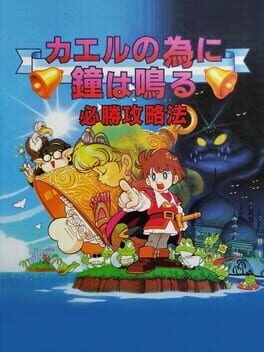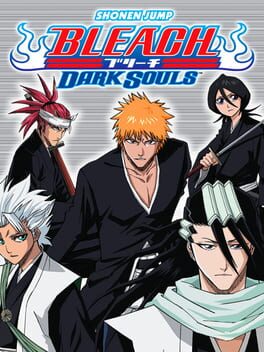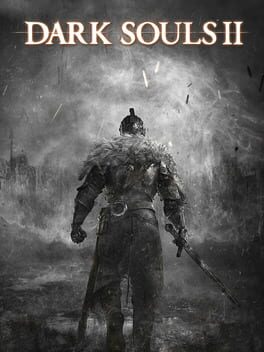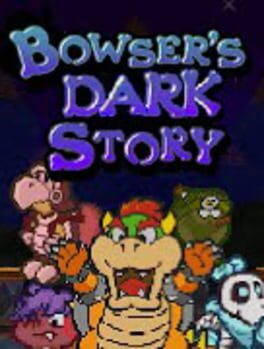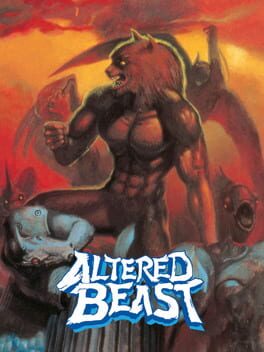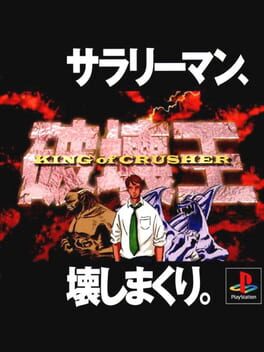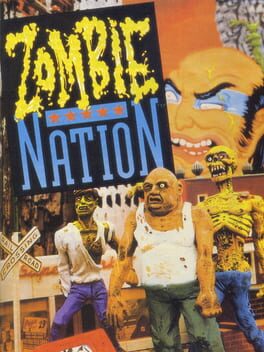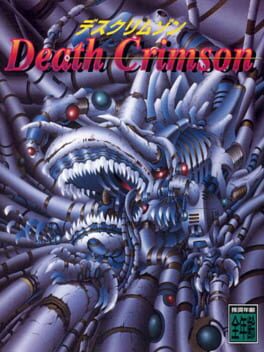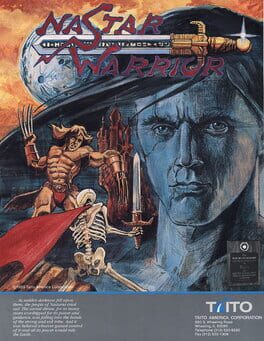ranrannerson
1208 reviews liked by ranrannerson
Dragon Quest
2004
Ah, the RPG in its purest form. A dragon is searing my flesh with its fiery roar? No matter! I dost have the perfect stratagem to slay the fell beast!
decimates the local slime population for an hour
What sayest thou now, green dragon? Mine numbers are higher than thine own! Who'm'st've else could have come up with so bold, so daring, so wonderfully thought out of a plan to rend thy scales from thy wretched hide? Wouldst you flee in terror at my superior level? Wouldst you not fight to the bitter end? But thou must!
Seriously though, despite every fight in this game being a one-on-one slugfest, (and, I know I could put the bad guys to sleep but like, when it doesn't work the first time I'm not too inclined to try it again lmao) it's still a fun game! Alefgard is a charming little kingdom, thanks in large part to its inhabitants. The townsfolk might not say anything particularly interesting, but they speak with such charm. I couldn't help but want to see their kingdom saved.
Unfortunately, this was my third go at saving their kingdom, and this game really suffers on repeat playthroughs. The way the game is structured requires that no real story triggers be hit; if you know which items need to be taken where you can just go do it without talking to anybody. And the bonk-or-get-bonked nature of the combat means the only thing stopping you from having full run of the map is that you'll quickly die if you go too far out. So the only thing left for it is to grind until you can successfully Not Die.
Now all of that is fine on a first playthrough, because there isn't much time spent actually grinding. At least, that's how it feels to me when I'm exploring and just happen to be killing every slime I see along the way. It isn't grinding, it's just a fortunate coincidence of my wanderings! Grinding is only grinding when it feels like a grind. And a second or third playthrough of this game definitely feels like a grind.
But it's one of the first JRPGs ever. So, ya know, can't be too hard on it lol
(One last side note: your mileage may vary depending on which version of the game you play. This Switch port that I played gives you more gold and experience compared to the NES original, which speeds things up tremendously. But it does give you a map that shows you exactly where all the towns and caves are, which could cause similar issues to doing a second playthrough. And it's missing a pleasant graphical effect when you build a bridge near the end of the game. There's always gotta be tradeoffs with these things.)
decimates the local slime population for an hour
What sayest thou now, green dragon? Mine numbers are higher than thine own! Who'm'st've else could have come up with so bold, so daring, so wonderfully thought out of a plan to rend thy scales from thy wretched hide? Wouldst you flee in terror at my superior level? Wouldst you not fight to the bitter end? But thou must!
Seriously though, despite every fight in this game being a one-on-one slugfest, (and, I know I could put the bad guys to sleep but like, when it doesn't work the first time I'm not too inclined to try it again lmao) it's still a fun game! Alefgard is a charming little kingdom, thanks in large part to its inhabitants. The townsfolk might not say anything particularly interesting, but they speak with such charm. I couldn't help but want to see their kingdom saved.
Unfortunately, this was my third go at saving their kingdom, and this game really suffers on repeat playthroughs. The way the game is structured requires that no real story triggers be hit; if you know which items need to be taken where you can just go do it without talking to anybody. And the bonk-or-get-bonked nature of the combat means the only thing stopping you from having full run of the map is that you'll quickly die if you go too far out. So the only thing left for it is to grind until you can successfully Not Die.
Now all of that is fine on a first playthrough, because there isn't much time spent actually grinding. At least, that's how it feels to me when I'm exploring and just happen to be killing every slime I see along the way. It isn't grinding, it's just a fortunate coincidence of my wanderings! Grinding is only grinding when it feels like a grind. And a second or third playthrough of this game definitely feels like a grind.
But it's one of the first JRPGs ever. So, ya know, can't be too hard on it lol
(One last side note: your mileage may vary depending on which version of the game you play. This Switch port that I played gives you more gold and experience compared to the NES original, which speeds things up tremendously. But it does give you a map that shows you exactly where all the towns and caves are, which could cause similar issues to doing a second playthrough. And it's missing a pleasant graphical effect when you build a bridge near the end of the game. There's always gotta be tradeoffs with these things.)
Kirby's Dream Land 2
1995
The first time I ever beat this game was back in 2022. After playing Forgotten Land when it launched, and really enjoying that, I was still in a Kirby mood and decided to beat one of the few mainline games I haven't already. While not bad overall, I found this notably weaker than Dreamland 1 for several reasons. I was a bit generous back then tho and gave it a 6 like I did Dreamland 1. Well coming back to it again, yeah It's still weaker than Dreamland 1 and I'm dropping it to a 5 now.
That's not to say there aren't some things this game improved on compared to 1. Overall, Kirby feels better to control in this one which is nice. While I'm nostalgic for the first game's ost, this game might have it beat overall. Sure it reuses a lot of tracks from Dreamland 1 and Adventure, however it's original tracks are actually really damn good. Coo's Theme is the real standout here, goddamn is that some good shit. Visually it also looks nicer than Dreamland 1 I'd say, though still doesn't look that great overall since it's still a Gameboy game.
The main thing this game added though were the animal friends. The aforementioned Koo the owl, Kine the fish and Rick the hamster are the three buddies in this game. They're a fun addition and change the gameplay up. Since copy abilities are back, each animal friend actually has their own version of each one. They greatly vary in usage though. Koo with parasol is amazing while Rick with needle is most of the time awful. It's a cool idea, that gets expanded on way more in Dreamland 3, however the execution here is very hit and miss.
Something you can use these animal friends abilities on are copy ability specific blocks. These usually block the main collectable in this game, the rainbow drops. To get 100% in this game, and fight the true final boss, you must get them all. Let me tell you, some of them are a huge pain to get. Not only are the later ones cryptic, the one where you have to use Kine + electric is just straight BS sometimes because of what you have to do to get it. If you know you know, but either way you most likely won't be getting these without a guide.
Other than that, the game just goes on for way too long I feel. To beat Dreamland 1, it takes around and hour or less (most likely a half hour) which is perfect for the type of game this is. Dreamland 2 might improve on 1's controls a bit, but it's still a Gameboy game and it's around 4 hours long to full complete everything. That's way longer and as such it just drags on near the end. That, plus the level design can be very hit or miss. Most of the levels are passable I'd say, however the game really loves its auto scrolling levels and these can be a bitch sometimes with it being a Gameboy game. And of course there's the infamous auto-scroller with the instakill dead ends that is pure trial and error and yeah that one is pure dogshit.
Along with the rainbow drops, to get 100% you have to also do these star collecting minigames and also find the female Gooey once. Gooey is this blobby guy that replaces an animal buddy if it gives you the one you already have. He just gives you some health back if you collect him. However there's a 1/8 chance it'll be a female Gooey instead and finding her actually contributes to 100% which is weird but easy to do in a certain level luckily. The star minigames you can do after going into the boss door again after you've beaten them. You have to collect every star and get a perfect in every world because this contributes to 100%. The minigames themselves are fine enough, however if you get hit or miss a star, you can't play it again until you go and beat a stage. I get why they do this as it's easy to grind lives if this wasn't in place, however the fact you have to do this for 100% just means it wastes time if you lose which isn't fun.
This is the first in the Dark Matter trilogy and so after we defeat Dedede at the end, we get to fight Dark Matter for the first time. Get used to doing that as he's a regular throughout the trilogy ofc. I remember the fight being more frustrating back in 2022, but here it wasn't too bad. Decent introduction to them as a main antagonist of the trilogy.
While I quite like Dreamland 1 and 3, I don't have much of a connection to 2 at all and I personally think it's a lot more flawed compared to those two games. It improves on some things from 1 but is also way longer and drags on because of that. Not to mention it's annoying to 100%. It's not a terrible sequel but I personally think it's a downgrade compared to 1 even if the animal friends and copy abilities being here are nice. I'll take 1 any day of the week over this.
That's not to say there aren't some things this game improved on compared to 1. Overall, Kirby feels better to control in this one which is nice. While I'm nostalgic for the first game's ost, this game might have it beat overall. Sure it reuses a lot of tracks from Dreamland 1 and Adventure, however it's original tracks are actually really damn good. Coo's Theme is the real standout here, goddamn is that some good shit. Visually it also looks nicer than Dreamland 1 I'd say, though still doesn't look that great overall since it's still a Gameboy game.
The main thing this game added though were the animal friends. The aforementioned Koo the owl, Kine the fish and Rick the hamster are the three buddies in this game. They're a fun addition and change the gameplay up. Since copy abilities are back, each animal friend actually has their own version of each one. They greatly vary in usage though. Koo with parasol is amazing while Rick with needle is most of the time awful. It's a cool idea, that gets expanded on way more in Dreamland 3, however the execution here is very hit and miss.
Something you can use these animal friends abilities on are copy ability specific blocks. These usually block the main collectable in this game, the rainbow drops. To get 100% in this game, and fight the true final boss, you must get them all. Let me tell you, some of them are a huge pain to get. Not only are the later ones cryptic, the one where you have to use Kine + electric is just straight BS sometimes because of what you have to do to get it. If you know you know, but either way you most likely won't be getting these without a guide.
Other than that, the game just goes on for way too long I feel. To beat Dreamland 1, it takes around and hour or less (most likely a half hour) which is perfect for the type of game this is. Dreamland 2 might improve on 1's controls a bit, but it's still a Gameboy game and it's around 4 hours long to full complete everything. That's way longer and as such it just drags on near the end. That, plus the level design can be very hit or miss. Most of the levels are passable I'd say, however the game really loves its auto scrolling levels and these can be a bitch sometimes with it being a Gameboy game. And of course there's the infamous auto-scroller with the instakill dead ends that is pure trial and error and yeah that one is pure dogshit.
Along with the rainbow drops, to get 100% you have to also do these star collecting minigames and also find the female Gooey once. Gooey is this blobby guy that replaces an animal buddy if it gives you the one you already have. He just gives you some health back if you collect him. However there's a 1/8 chance it'll be a female Gooey instead and finding her actually contributes to 100% which is weird but easy to do in a certain level luckily. The star minigames you can do after going into the boss door again after you've beaten them. You have to collect every star and get a perfect in every world because this contributes to 100%. The minigames themselves are fine enough, however if you get hit or miss a star, you can't play it again until you go and beat a stage. I get why they do this as it's easy to grind lives if this wasn't in place, however the fact you have to do this for 100% just means it wastes time if you lose which isn't fun.
This is the first in the Dark Matter trilogy and so after we defeat Dedede at the end, we get to fight Dark Matter for the first time. Get used to doing that as he's a regular throughout the trilogy ofc. I remember the fight being more frustrating back in 2022, but here it wasn't too bad. Decent introduction to them as a main antagonist of the trilogy.
While I quite like Dreamland 1 and 3, I don't have much of a connection to 2 at all and I personally think it's a lot more flawed compared to those two games. It improves on some things from 1 but is also way longer and drags on because of that. Not to mention it's annoying to 100%. It's not a terrible sequel but I personally think it's a downgrade compared to 1 even if the animal friends and copy abilities being here are nice. I'll take 1 any day of the week over this.
Honkai: Star Rail
2023
Started playing this game at the recommendation of my girlfriend. I really liked the character designs she had shown me but was a little skeptical at first of if a mobile game would be so good or not. My prior experiences with mobile games had been Fire Emblem Heroes and Yugioh Duel Links, which both start off fun but eventually become more and more grindy if you’re a poor schmuck like me who can’t/doesn’t want to make in-app purchases. Long story short:this game is incredible, and thankfully perfectly playable without spending a single penny(I got both of the event banner 5 star characters I wanted just from the currency they gave me from in-game events, and if anything managed both in spite of very poor luck on my part). Everything from the combat system, to the music, to the little details in character interactions, really make a complete package. You are unfortunately reminded at certain intervals that this is a mobile game, but 90% of the time I logged into this I was having a lot of fun.
I think this might be my favorite Pokémon game after playing it, as somebody who stopped following the main series a long time ago this was a really refreshing change of ideas. Only real criticisms I can think of are that missing a bunch of mons(including ones that were in the original Gen 4 games) really sucks and that the difficulty plummets pretty quickly. The few boss fights that are difficult though were really fun.
On release, Wonder was quickly crowned the new king of the 2D Mario series by legions of folks who’d been burned deeply by the New Super Mario Bros. tetrology's shallow and uninspired aesthetic. I was there. I’ve played all of these games. 2D Mario games are important enough to me that I will play them on a TV, even if it means passers-by can look in and clearly tell that I’m not filing my tax returns. I finished Wonder with 100% completion on the weekend of October 20th, 2023 (unless you count the standees. I don’t). I’ve replayed all of its levels at least twice, with and without grabbing each Wonder Flower. You know I like this game a heck of a lot. Nevertheless, I’ve got a lot to say, not all of it good. This is gonna sound a bit dry.
On Super Mario Bros. Wonder (OR — "No Country for New Super Mario Bros.")
Visually, Wonder is closer to my Dream Mario than any other this side of Yoshi’s Island, and I do hope the next one commits even harder to the cartoonishness of this aesthetic. My first impression was that it had the best control of any game in the 2D series, and in most respects, I do still believe that. The “New” games carried with them this lumbering heaviness that I’m glad we’ve shed away. The Elephant power-up is a bit undercooked, but the other two additions appropriately shake up the player's relationship with enemies and the environment. Just being able to jump into enemies from below while at a full sprint makes the Drill a treat, even without considering its burrowing ability. The removal of a flight-based power was likely due to multiplayer, but in principle, it helps the game stay centered squarely on running and jumping, and encourages creative use of the Bubble Flower (which, yes, is more or less a retooled Bubble Yoshi from off of NSMBU). The Demon’s Souls online feature is welcome; I didn’t see myself playing as a guardian angel in a Mario game, but here we are. Badges are a solid addition too, especially for newcomers. I can play as Daisy. Awesome stuff. Promising. Shame that, to my taste, there’s a lot left on the table here.
Every stage of this game locks its enemies and visuals and stage gimmicks down almost completely; you’re not likely to see much crossover. There’s one rolla-koopa stage, one hoppycat stage, one condart stage. These guys are stuck in their zones. It results in an impressive level of variety, but also prevents the game from meaningfully building on concepts from stage to stage. You don’t get that blending of flavors you’ll find in the series’ earliest entries. In this respect, it’s arguably even more formulaic than the games it’s trying to subvert. Each level’s gimmicks undergo a similar arc before being put away, each of them with a Wonder Flower to find which activates a minigame or setpiece. Nothing so plain as the well-documented and scientifically-proven "Four Step Level Design" of New Super Mario Bros., they just remembered to add the sugar. Would people still be talking about Mario 3's Angry Sun if you had to pop a regularly-mandated Wonder Flower to activate it? I don’t think it helps that these stages are threaded together as loosely as they are.
Playing into its save feature, Super Mario World invited its players to revisit levels for alternate exits and hidden secrets. Wonder doubles down on that attitude, with a wide-open map and only a single file per user. You’re meant to dig around in these levels and scour the world, but there isn’t really a whole lot to find. Yes, there are large coins to collect, tops of flagpoles to grab, but – and I hate to grumble – these pale in comparison to the discovery of warp zones, unique power-ups, and routes which alter the trajectory of a playthrough. I think they’d have been better off hiding badges within full stages than keeping them in shops or bespoke levels on the overworld. I’m of the opinion that collectibles should feel immediately tangible and exciting. Wonder sidesteps the checklist school of design for the most part, but I’d like to see it drop outta these games completely.
Here's what I'm getting at – I don’t think Wonder is adept at curating its adventure, and I don’t get the impression that its developers made that a priority. There’s a sort of halfhearted effort to add a single story beat to each world, and it's unconvincing. Possible plants just don't tend to pay off. The talking flowers never do. Stages are clustered together with respect to difficulty and theming, but any pretense of a “flow” between them, that levels together form an arc, is rarely suggested. A level is an island unto itself. It’s because the game isn’t concerned with its own replayability, actively obfuscating the option to start a New Game. It’s because Wonder isn’t all that interested in blending ideas between stages. It’s because the “Wonder” gimmick, ironically, requires each level to follow the same general beats.
I came for an album, and what I got was a collection of singles. They’re good, even great singles, but I don’t think it comes together as a whole game in the same way each of the old classics did. I hope Wonder is a sign that Nintendo is open to getting even more experimental with the conventions of this series (maybe cut out the world map next time, have one continuous game of back-to-back platforming levels), and I’m glad it was well received. You can feel those seasoned designers stretching their legs with this one — it beats out the New Super Marios on charm factor alone — and I squeezed every last drop I could out of it. I believe greater heights are within reach for this series, but if this is the last for a while, I'll still be more than appreciative that Wonder got its moment in the spotlight.
(...if you'd like to see where this falls on my list of the Thirty-Five Best Games I Played in 2023, you can check it out here. Thanks for reading!)
On Super Mario Bros. Wonder (OR — "No Country for New Super Mario Bros.")
Visually, Wonder is closer to my Dream Mario than any other this side of Yoshi’s Island, and I do hope the next one commits even harder to the cartoonishness of this aesthetic. My first impression was that it had the best control of any game in the 2D series, and in most respects, I do still believe that. The “New” games carried with them this lumbering heaviness that I’m glad we’ve shed away. The Elephant power-up is a bit undercooked, but the other two additions appropriately shake up the player's relationship with enemies and the environment. Just being able to jump into enemies from below while at a full sprint makes the Drill a treat, even without considering its burrowing ability. The removal of a flight-based power was likely due to multiplayer, but in principle, it helps the game stay centered squarely on running and jumping, and encourages creative use of the Bubble Flower (which, yes, is more or less a retooled Bubble Yoshi from off of NSMBU). The Demon’s Souls online feature is welcome; I didn’t see myself playing as a guardian angel in a Mario game, but here we are. Badges are a solid addition too, especially for newcomers. I can play as Daisy. Awesome stuff. Promising. Shame that, to my taste, there’s a lot left on the table here.
Every stage of this game locks its enemies and visuals and stage gimmicks down almost completely; you’re not likely to see much crossover. There’s one rolla-koopa stage, one hoppycat stage, one condart stage. These guys are stuck in their zones. It results in an impressive level of variety, but also prevents the game from meaningfully building on concepts from stage to stage. You don’t get that blending of flavors you’ll find in the series’ earliest entries. In this respect, it’s arguably even more formulaic than the games it’s trying to subvert. Each level’s gimmicks undergo a similar arc before being put away, each of them with a Wonder Flower to find which activates a minigame or setpiece. Nothing so plain as the well-documented and scientifically-proven "Four Step Level Design" of New Super Mario Bros., they just remembered to add the sugar. Would people still be talking about Mario 3's Angry Sun if you had to pop a regularly-mandated Wonder Flower to activate it? I don’t think it helps that these stages are threaded together as loosely as they are.
Playing into its save feature, Super Mario World invited its players to revisit levels for alternate exits and hidden secrets. Wonder doubles down on that attitude, with a wide-open map and only a single file per user. You’re meant to dig around in these levels and scour the world, but there isn’t really a whole lot to find. Yes, there are large coins to collect, tops of flagpoles to grab, but – and I hate to grumble – these pale in comparison to the discovery of warp zones, unique power-ups, and routes which alter the trajectory of a playthrough. I think they’d have been better off hiding badges within full stages than keeping them in shops or bespoke levels on the overworld. I’m of the opinion that collectibles should feel immediately tangible and exciting. Wonder sidesteps the checklist school of design for the most part, but I’d like to see it drop outta these games completely.
Here's what I'm getting at – I don’t think Wonder is adept at curating its adventure, and I don’t get the impression that its developers made that a priority. There’s a sort of halfhearted effort to add a single story beat to each world, and it's unconvincing. Possible plants just don't tend to pay off. The talking flowers never do. Stages are clustered together with respect to difficulty and theming, but any pretense of a “flow” between them, that levels together form an arc, is rarely suggested. A level is an island unto itself. It’s because the game isn’t concerned with its own replayability, actively obfuscating the option to start a New Game. It’s because Wonder isn’t all that interested in blending ideas between stages. It’s because the “Wonder” gimmick, ironically, requires each level to follow the same general beats.
I came for an album, and what I got was a collection of singles. They’re good, even great singles, but I don’t think it comes together as a whole game in the same way each of the old classics did. I hope Wonder is a sign that Nintendo is open to getting even more experimental with the conventions of this series (maybe cut out the world map next time, have one continuous game of back-to-back platforming levels), and I’m glad it was well received. You can feel those seasoned designers stretching their legs with this one — it beats out the New Super Marios on charm factor alone — and I squeezed every last drop I could out of it. I believe greater heights are within reach for this series, but if this is the last for a while, I'll still be more than appreciative that Wonder got its moment in the spotlight.
(...if you'd like to see where this falls on my list of the Thirty-Five Best Games I Played in 2023, you can check it out here. Thanks for reading!)
Decided to finally replay this game again after a handful of years
Even if there should've been more variety in the dungeon design and enemy encounters, if you ask me I still think the gameplay here is a notch more engaging than most other turn-based games. You do have to try and conserve PP, numerous items are genuinely useful, and most enemies can kill you quick so you have to be a bit careful (and a bit is a lot more than most turn-based games). I do think the bosses should be much harder though. I destroyed them this time around; I really don't remember them having this few HP/defenses. Some of the outlaws from sidequests tend to be more tricky to take down than the main story bosses.
This is also another game where I'd glad the main story isn't too long. I think the pacing is near perfect. There weren't as much sidequest days you need to go through as I remember. For both sidequests and main story you can get away with not exploring most rooms of most dungeons. Which may mean exploration in this game isn't that encouraged but I'll take it if it means a less tedious, boring experience of going through the shallow dungeons I find in most turn based games. Something about the fast paced dungeon crawling of the Mystery Dungeon franchise is honestly appealing to me.
I just wanted to throw some of my thoughts on the gameplay out there. I still of course love the story and presentation as much as ever (blush + smile with closed eyes emoji)
Even if there should've been more variety in the dungeon design and enemy encounters, if you ask me I still think the gameplay here is a notch more engaging than most other turn-based games. You do have to try and conserve PP, numerous items are genuinely useful, and most enemies can kill you quick so you have to be a bit careful (and a bit is a lot more than most turn-based games). I do think the bosses should be much harder though. I destroyed them this time around; I really don't remember them having this few HP/defenses. Some of the outlaws from sidequests tend to be more tricky to take down than the main story bosses.
This is also another game where I'd glad the main story isn't too long. I think the pacing is near perfect. There weren't as much sidequest days you need to go through as I remember. For both sidequests and main story you can get away with not exploring most rooms of most dungeons. Which may mean exploration in this game isn't that encouraged but I'll take it if it means a less tedious, boring experience of going through the shallow dungeons I find in most turn based games. Something about the fast paced dungeon crawling of the Mystery Dungeon franchise is honestly appealing to me.
I just wanted to throw some of my thoughts on the gameplay out there. I still of course love the story and presentation as much as ever (blush + smile with closed eyes emoji)
!!! MOVE OVER GAMERS, WE GOTTA GET THIS REVIEW OUT BEFORE CHRISTMAS !!!
You want to know the funniest thing about being a kid? It’s being ignorant to the fact that some things are just horseshit, and boy was kid me quite the ignoramus. Revisiting this game, it’s not like I didn’t know what I was getting myself into but there was some sick part of me that wanted to relive a good moment of my life in the one Spyro game I have the most unblurry memories of.
Well it turns out, those memories end at the 2nd level and nothing beyond it. Even the borderline racist NPCs somehow scrubbed from my mind. There’s no shot I finished this as a kid, and my memories kept the better portion of the game in stasis forever. They’re not good levels per se, just functionally better. After that the game quickly hurtles closer towards dystopia the further you get into it. To put it quite bluntly, this game is just not finished and couldn’t be more of a beacon of developmental hell. Except this was from the PS2/Gamecube era back in 2002 and.. yeah folks, crunch and corporate shenanigans have been happening our entire lives. This shit was made in the same time it takes to grow a human fetus and still somehow ended up being more of a disappointment.
With vast levels that are emptier than corn fields and enemies with zero life put into them. There’s no variety to be seen, just small ranged dinosaur and big dinosaur who make this sound when you murder them. If this game has achieved anything, it’s that it is at the very least sometimes funny. But you won’t be laughing when the camera 360 no scopes itself into the wall of the level design, launching you off the platform that you’re currently standing on. On normal hardware this game runs like it’s being squeezed through a tube, but even while playing it through unscrupulous means there still feels like there’s some sort of wind resistance pushing against Spyro as he charges. He feels like he weighs a metric ton, which makes platforming a goddamn nightmare. If that’s not enough for you, throw in some magic floors that clip through your body, and mini-games made by Satan himself. You want to go on your cozy little gem collectathon, but they removed Sparx’s little hint clues which means you’ll be scouring all of these gigantic levels for much longer than you want just for that one last gem to appear out of thin air because it glitched out the first time. It's actually a marvel of achievement that speedrunners were able to figure out how to beat this game in 1 minute, the amount of time it takes for the veil of nostalgia to be sucked from your eyes.
What’s it all for, you may ask? Well, some of the most weirdly named Dragonflies I could have ever imagined. They really just pulled from anywhere with these guys. “Hey, it’s Karen!!” Spyro says, but the subtitle says “Rhett.” I can’t believe my childhood hero Spyro just deadnamed that dragonfly. And like I said, these issues get more prevalent as the game keeps going. With each level, the more unfinished it feels. The worlds get emptier with more nonsensical tasks that barely function. Assets aren’t re-used, but still uninspiringly pulled from previous titles in an effort to save time. Unlockable powers that get used less and less, voice lines completely missing in some instances, etc., etc. It all culminates into a final boss fight that not even I could foresee. A baffling affront to God himself, just a gauntlet of atrocities deep fried through the Christmas deadline conveyor belt. Spyro died and we killed him.
Keep this game dead, do not “reignite” it. There is no redemption to be had. Lock this one in the vault and treat it like a lesson. One day you too could make your own Enter The Dragonfly, and you don’t want to be that guy. Sometimes things should be left as memories in our heads, never to be revisited. This is a ghost for a reason, so fear it.
Now for the end of this review, I feel like it’d be only fitting to just stop talking in the middle of my
You want to know the funniest thing about being a kid? It’s being ignorant to the fact that some things are just horseshit, and boy was kid me quite the ignoramus. Revisiting this game, it’s not like I didn’t know what I was getting myself into but there was some sick part of me that wanted to relive a good moment of my life in the one Spyro game I have the most unblurry memories of.
Well it turns out, those memories end at the 2nd level and nothing beyond it. Even the borderline racist NPCs somehow scrubbed from my mind. There’s no shot I finished this as a kid, and my memories kept the better portion of the game in stasis forever. They’re not good levels per se, just functionally better. After that the game quickly hurtles closer towards dystopia the further you get into it. To put it quite bluntly, this game is just not finished and couldn’t be more of a beacon of developmental hell. Except this was from the PS2/Gamecube era back in 2002 and.. yeah folks, crunch and corporate shenanigans have been happening our entire lives. This shit was made in the same time it takes to grow a human fetus and still somehow ended up being more of a disappointment.
With vast levels that are emptier than corn fields and enemies with zero life put into them. There’s no variety to be seen, just small ranged dinosaur and big dinosaur who make this sound when you murder them. If this game has achieved anything, it’s that it is at the very least sometimes funny. But you won’t be laughing when the camera 360 no scopes itself into the wall of the level design, launching you off the platform that you’re currently standing on. On normal hardware this game runs like it’s being squeezed through a tube, but even while playing it through unscrupulous means there still feels like there’s some sort of wind resistance pushing against Spyro as he charges. He feels like he weighs a metric ton, which makes platforming a goddamn nightmare. If that’s not enough for you, throw in some magic floors that clip through your body, and mini-games made by Satan himself. You want to go on your cozy little gem collectathon, but they removed Sparx’s little hint clues which means you’ll be scouring all of these gigantic levels for much longer than you want just for that one last gem to appear out of thin air because it glitched out the first time. It's actually a marvel of achievement that speedrunners were able to figure out how to beat this game in 1 minute, the amount of time it takes for the veil of nostalgia to be sucked from your eyes.
What’s it all for, you may ask? Well, some of the most weirdly named Dragonflies I could have ever imagined. They really just pulled from anywhere with these guys. “Hey, it’s Karen!!” Spyro says, but the subtitle says “Rhett.” I can’t believe my childhood hero Spyro just deadnamed that dragonfly. And like I said, these issues get more prevalent as the game keeps going. With each level, the more unfinished it feels. The worlds get emptier with more nonsensical tasks that barely function. Assets aren’t re-used, but still uninspiringly pulled from previous titles in an effort to save time. Unlockable powers that get used less and less, voice lines completely missing in some instances, etc., etc. It all culminates into a final boss fight that not even I could foresee. A baffling affront to God himself, just a gauntlet of atrocities deep fried through the Christmas deadline conveyor belt. Spyro died and we killed him.
Keep this game dead, do not “reignite” it. There is no redemption to be had. Lock this one in the vault and treat it like a lesson. One day you too could make your own Enter The Dragonfly, and you don’t want to be that guy. Sometimes things should be left as memories in our heads, never to be revisited. This is a ghost for a reason, so fear it.
Now for the end of this review, I feel like it’d be only fitting to just stop talking in the middle of my
How do you follow up the likes of that which has never been seen before? Could you even hope to surpass the video game equivalent of lightning in a bottle? Keita Takahashi didn’t think so, but Namco saw the pot of gold at the end of the rainbow and wanted more. So, he compromised. He agreed to direct the sequel after learning that Namco was willing to forge ahead, with or without him, and in exchange, the sequel became a metaphor for his mixed feelings regarding sequelitis and his eventual alienation from videogames as a whole. The result is We Love Katamari, a successor that tackled the subject of pandering to those around you while attempting to maintain the spirit of the original. The original Katamari Damacy was interpreted by many as an object of childlike wonder, railing against any form of cynicism while explaining absolutely nothing to preserve that joy. We Love Katamari on the other hand, turns the irreverence up to 11… and honestly, I’m all for it. As the Prince and the King of the Cosmos attempt to fulfill every fan’s request while repopulating the sky, they’re confronted with increasingly absurd situations. There’s a baby that outright tells you that he’s glad he was born to see the Prince of the Cosmos fulfill his lifelong dreams. Animals send requests a few times too, with some white dog telling you to roll around a zoo so he can attend a concert with more friends. To top this all off, the astronaut from the first game begs you to save the Earth from impending doom by rolling up countries of the world to stop an asteroid. The requests are all over the place and just as wild, if not wilder, than Katamari Damacy, and it’s fascinating how simultaneously off-the-rails the plot and worldbuilding have become even as the game remains one of Takahashi’s most intimate works, conveying his complicated feelings in this microcosm of cathartic destruction.
In terms of gameplay, We Love Katamari takes many of the logical steps in terms of progressing its simple yet realized formula. While the original game was content setting up its structure and letting players romp about in an expanding playground, We Love Katamari actively tests its limits of experimentation, challenging perceptions of what could be achieved with its level design while making players sweat with more complex goals and stricter time limits. Now granted, I concede that not everything in the sequel impresses me. The firefly level has a solid concept (roll up fireflies in a camping ground so a student has more light to study with) but doesn’t achieve much in terms of sense of scale or underlying complexity besides “roll up things quickly to get bright,” I could have done without three different variations of the Saturn levels where you just have to decide when you’re of the proper size, and I personally am not a huge fan of the underwater level where you have to handle floatier physics while dodging fishing hooks that put you out of commission for a bit. That said, the expansions that I did enjoy, I ended up really enjoying. There’s another campgrounds level where you control a burning Katamari and must carefully consider pathing on the fly to make sure that you never run out of fuel while avoiding any water sources that would snuff you out. Conversely, there’s another zoo level that sets a limit not on time, but on the things you’re allowed to roll up; as a result, it becomes an interesting exercise of restraint and sight-recognition, figuring out exactly the biggest things you can roll up at any time while outright avoiding anything else. Other favorite levels here include a racetrack where you “race” against a flurry of karts on a looping island road while barreling through anything in your way, and a sumo wrestling level where instead of rolling a Katamari, you roll the awkwardly-shaped sumo wrestler himself, and must prioritize foods as part of training him up to eventually KO his awaiting opponent. While some of the sequel's levels are content just playing with the established formula of “roll up things to get bigger to roll up more things,” the best levels here emphasize Katamari’s arcade and puzzle-like qualities by enforcing familiarization with the intricate object placement while accentuating the need for careful routing to avoid larger obstacles only to consume them whole later.
I must admit that despite my appreciation for what the sequel brings to the table, there’s a part of me that still prefers the original. There’s a sort of cohesion present in the original from repeating the same three levels but in slightly different ways and exploring them with different sizes that I think is missing in the sequel; rather, the sequel feels a bit more disconnected, with all the different fan-requests pulling from all different sides and a lot of the environments showing up for just a couple of stages or so. As a result, despite having more fleshed out execution of its base formula, I still feel as if the sequel could have more thoroughly explored certain levels in order to realize their full potential. In addition, I do find the sequel slightly more grindy than the original: not necessarily just because it’s harder (though I can’t rule out the possibility that this might be a factor), but because one of the final levels can’t be unlocked until you collect all the cousins (more or less just a cosmetic in the original), and multiple cousins are often present in the same level even though you’re only allowed to roll up and unlock one cousin per run. Finally, I must agree with everyone else in that I don’t think the extra Reverie levels from the remaster add much to the core experience, or at the very least didn’t wow me in the same way that many of the more experimental base game levels did. Rolling up clutter in a room as fast as possible and creating a variation of the racetrack level (just with the goal of snagging tires instead of overall size) doesn’t quite hit the same I suppose. Nevertheless, don’t let my personal gripes distract you from the fact that I absolutely recommend this. It's everything that a sequel could hope to be and more, providing a satisfying evolution to the series that stresses its understated design principles while serving as both a love-letter to the franchise and a send-off to Keita Takahashi’s most famous contributions to the medium. At the end of the day, we love Katamari, and while it may not be enough for Takahashi, it’s enough to matter for me.
In terms of gameplay, We Love Katamari takes many of the logical steps in terms of progressing its simple yet realized formula. While the original game was content setting up its structure and letting players romp about in an expanding playground, We Love Katamari actively tests its limits of experimentation, challenging perceptions of what could be achieved with its level design while making players sweat with more complex goals and stricter time limits. Now granted, I concede that not everything in the sequel impresses me. The firefly level has a solid concept (roll up fireflies in a camping ground so a student has more light to study with) but doesn’t achieve much in terms of sense of scale or underlying complexity besides “roll up things quickly to get bright,” I could have done without three different variations of the Saturn levels where you just have to decide when you’re of the proper size, and I personally am not a huge fan of the underwater level where you have to handle floatier physics while dodging fishing hooks that put you out of commission for a bit. That said, the expansions that I did enjoy, I ended up really enjoying. There’s another campgrounds level where you control a burning Katamari and must carefully consider pathing on the fly to make sure that you never run out of fuel while avoiding any water sources that would snuff you out. Conversely, there’s another zoo level that sets a limit not on time, but on the things you’re allowed to roll up; as a result, it becomes an interesting exercise of restraint and sight-recognition, figuring out exactly the biggest things you can roll up at any time while outright avoiding anything else. Other favorite levels here include a racetrack where you “race” against a flurry of karts on a looping island road while barreling through anything in your way, and a sumo wrestling level where instead of rolling a Katamari, you roll the awkwardly-shaped sumo wrestler himself, and must prioritize foods as part of training him up to eventually KO his awaiting opponent. While some of the sequel's levels are content just playing with the established formula of “roll up things to get bigger to roll up more things,” the best levels here emphasize Katamari’s arcade and puzzle-like qualities by enforcing familiarization with the intricate object placement while accentuating the need for careful routing to avoid larger obstacles only to consume them whole later.
I must admit that despite my appreciation for what the sequel brings to the table, there’s a part of me that still prefers the original. There’s a sort of cohesion present in the original from repeating the same three levels but in slightly different ways and exploring them with different sizes that I think is missing in the sequel; rather, the sequel feels a bit more disconnected, with all the different fan-requests pulling from all different sides and a lot of the environments showing up for just a couple of stages or so. As a result, despite having more fleshed out execution of its base formula, I still feel as if the sequel could have more thoroughly explored certain levels in order to realize their full potential. In addition, I do find the sequel slightly more grindy than the original: not necessarily just because it’s harder (though I can’t rule out the possibility that this might be a factor), but because one of the final levels can’t be unlocked until you collect all the cousins (more or less just a cosmetic in the original), and multiple cousins are often present in the same level even though you’re only allowed to roll up and unlock one cousin per run. Finally, I must agree with everyone else in that I don’t think the extra Reverie levels from the remaster add much to the core experience, or at the very least didn’t wow me in the same way that many of the more experimental base game levels did. Rolling up clutter in a room as fast as possible and creating a variation of the racetrack level (just with the goal of snagging tires instead of overall size) doesn’t quite hit the same I suppose. Nevertheless, don’t let my personal gripes distract you from the fact that I absolutely recommend this. It's everything that a sequel could hope to be and more, providing a satisfying evolution to the series that stresses its understated design principles while serving as both a love-letter to the franchise and a send-off to Keita Takahashi’s most famous contributions to the medium. At the end of the day, we love Katamari, and while it may not be enough for Takahashi, it’s enough to matter for me.
Yoshi's Story
1997
There's a nebulous concept I've struggled to pinpoint about certain games that's completely intangible to the usual scale that's often used to weigh them of their quality. It's not really unique entirely to Yoshi's Story, but to me it's probably among the strongest in it's field. It's that magical ability to have your emotions be naturally struck and never fail to bring a smile across your face. I really don't want to just call it "nostalgia", because it implies that it's only associated with me in particular, and no one else can really experience that same sudden wave of warmness. As I slipped more into pessimistic adulthood though, I started doubting this magic really existing.
"It's just an easy platformer with some high score mechanics, nothing more, nothing less. It's nothing special."
Everyone was right, it really was just my nostalgia overtaking my childish feelings. I'm just overly emotional. Yoshi's Story isn't special. Despite this, throughout all the troubles...the frequent moves to different homes, the friends permanently borrowing games, the trips to GameStop to sacrifice others in hopes of getting something new outside of Christmas or my birthday.....even the near-complete extinction of my childhood N64 cartridges due to my own dwindling interest in the system.....you're still here. That's why I sit here on my notepad document struggling to write about you, and I ask myself that ever so important question:
"What makes you so special?"
It's all too much. My hope to secure my reasoning beyond my own overactive imagination continues to falter. It can't be just because of Shy Guy Limbo and singing Yoshis, there has to be something. I start to believe that the so-called magic that I conjured in my own head is just that, only in my head. Just close the damn document and get back to work on that concept art you're supposed to be doing for a friend. Stop wasting your time. It's hopeless.
but...
Once in a while, I feel that spark of hope once more, and my fire burns again. Those rare times I meet someone who utters "I loved that game", or even "yeah, that music cheers me up too". My childhood optimism returns, perhaps...it isn't just me. The magic does exist. That quality that transcends anything else, something so powerful that it negates any terrible feelings. To remind oneself of simple and innocent times, to give some much needed emotional relief in times of hardship. For me, that right there is the strongest quality any form of media could possibly have.
Thank you, Yoshi.
"It's just an easy platformer with some high score mechanics, nothing more, nothing less. It's nothing special."
Everyone was right, it really was just my nostalgia overtaking my childish feelings. I'm just overly emotional. Yoshi's Story isn't special. Despite this, throughout all the troubles...the frequent moves to different homes, the friends permanently borrowing games, the trips to GameStop to sacrifice others in hopes of getting something new outside of Christmas or my birthday.....even the near-complete extinction of my childhood N64 cartridges due to my own dwindling interest in the system.....you're still here. That's why I sit here on my notepad document struggling to write about you, and I ask myself that ever so important question:
"What makes you so special?"
It's all too much. My hope to secure my reasoning beyond my own overactive imagination continues to falter. It can't be just because of Shy Guy Limbo and singing Yoshis, there has to be something. I start to believe that the so-called magic that I conjured in my own head is just that, only in my head. Just close the damn document and get back to work on that concept art you're supposed to be doing for a friend. Stop wasting your time. It's hopeless.
but...
Once in a while, I feel that spark of hope once more, and my fire burns again. Those rare times I meet someone who utters "I loved that game", or even "yeah, that music cheers me up too". My childhood optimism returns, perhaps...it isn't just me. The magic does exist. That quality that transcends anything else, something so powerful that it negates any terrible feelings. To remind oneself of simple and innocent times, to give some much needed emotional relief in times of hardship. For me, that right there is the strongest quality any form of media could possibly have.
Thank you, Yoshi.
146 lists liked by ranrannerson
by wheatie |
18 Games
by BlazingWaters |
12 Games
by fntm |
40 Games
by CorpsSansOrganes |
108 Games
by Nyo |
7 Games
by Metaligatr |
10 Games
by guiltyparty |
30 Games
by theia |
5 Games
by vehemently |
55 Games
